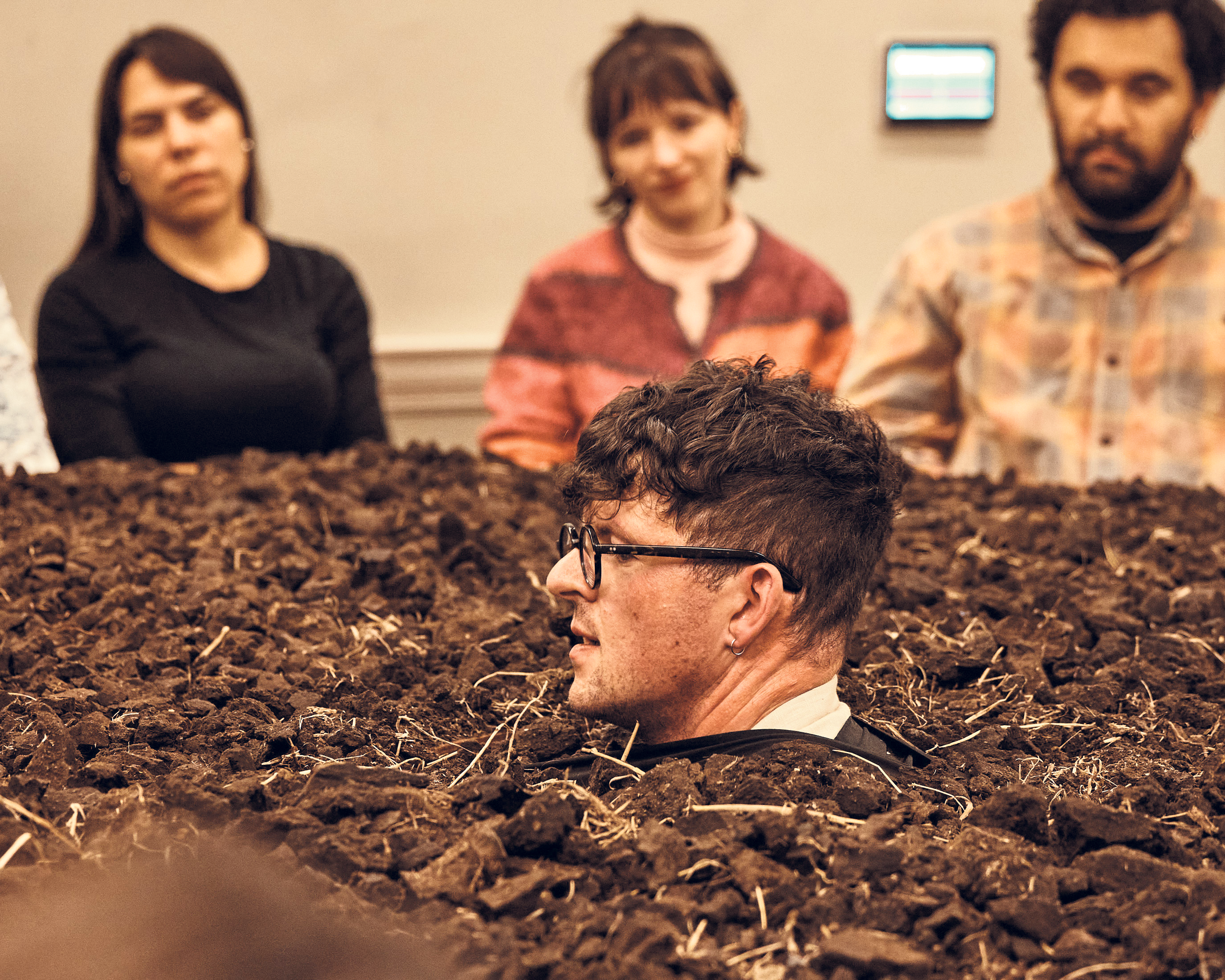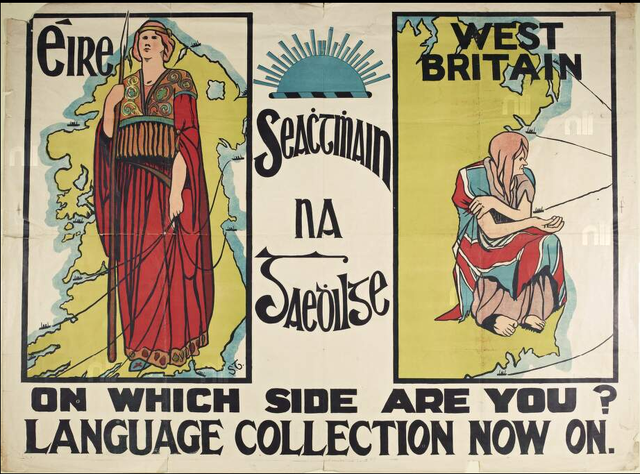A man of unparalleled intellect, wit and ability, Jonathan Swift is a native of Trinity and the creator of some of the greatest literary works of the 17th and 18th centuries. Gulliver’s Travels is the most widely read book ever written by an Irish writer. Born in 1667, this year marks the 350th anniversary of his birth.
Attending Trinity in 1682, Swift graduated four years later with a degree he dubbed “ex speciali gratia”, or “by special favour”, suggesting he was a less successful student than perhaps was true, a prime example of his characteristic mischief and wit. Such playfulness is something that would define Swift’s style of writing. Similarly, his tendency to completely contradict himself over the course of his publications is staggering, and makes Swift’s personal life, political affiliations and true opinions hard to gauge. Ironically, he was perhaps only able to remain devoutly loyal to a single idea throughout his life: his religion.
Apart from his writings, Swift had many unusual aspects to his character, including his political affiliations, his religious misgivings and his rather unusual relationship with women. Speaking to The University Times, Dr Andrew Carpenter, a former University College Dublin (UCD) lecturer and a recognised expert on the work of Swift, describes how “Swift himself was a changeable character, who was depressed by human behaviour and had a very low opinion of mankind as a whole”.
It is clear that Swift believed in a free Ireland as long as it was a Protestant-controlled Ireland
Despite Swift never really pinning his colours to the mast in terms of political party allegiance, to try and disconnect the political landscape contemporaneous with Swift’s life would be impossible. Following the civil war between the Catholic King James II and the Protestant William of Orange, Swift found himself inadvertently caught between the two sides. On the subject of Swift’s political allegiances at the time, Carpenter says that “it is clear that Swift believed in a free Ireland as long as it was a Protestant-controlled Ireland”.
He approved of the Penal laws and, most importantly, as Dr Carpenter states, “of the church and the state being undividedly interlinked”. This was perhaps for more personal reasons, as Swift was well aware that ordained students of Trinity would be given land in Ireland. Therefore, in backing the Protestant King William III to the throne, Swift was ensuring the survival of both himself and the church in Ireland.
Swift’s political allegiances were also subject to change throughout his life. The two primary parties of the time were the Tories and the Whigs. With the Tories more traditionalist in their views, the Whigs were defined by large industry, merchantmen and empire-building, dubbed the “new money” of the time by Carpenter.
Speaking to The University Times, Prof Ian Campbell Ross, Fellow Emeritus of Trinity and former Professor of 18th Century Studies in Trinity’s School of English, states his belief that Swift was “more Whiggish” in his early decades, but that he changed allegiances depending on the circumstances of the time. Carpenter argues that, in general, “the Tories provided more for the Church and so generally got more of his approval, but amidst the political turmoil following the reign of Queen Anne, Swift couldn’t afford to be a Tory in many ways”, as they were ousted from power in a major changing of the guard that threatened to leave Swift with no political support at all. Nevertheless, Swift’s political affiliations are possibly the most debated topic of his life and remain tremendously uncertain. Ross furthers this point by saying that Swift was “perfectly capable of attacking politicians of all hues if their actions or ideas conflicted with his own”.
Swift had many friends throughout his life. Former Archbishop of Canterbury William Temple, for example, provided him with his first job as a secretary in his office in London. Swift noted that “all that was good and amiable in the world, had died with Temple” following his friend’s death in 1699. His friendship with the Catholic poet and writer Alexander Pope was, according to Ross, “the closest of his life and this point is important in itself” as it shows his lack of prejudice towards Catholics and that his primary concern when relating to people was through their wit, ability and relatability to himself, which is unusual in a time when religious differences were so profound. Ross says that “they both shared a sense for the absurd”. Around the year 1710, the two companions formed a satirical group known as the Scriblerians and together they wrote a series of satirical biographies and writings known as Miscellanies . Pope was very unpopular and, as he was a Catholic, under Penal laws, he was marginalised and very restricted.
Swift enjoyed the company of young women throughout his life
Carpenter notes that “Swift enjoyed the company of young women throughout his life”. One of the most famous of these was Hester, known to Swift as “Stella” who, it has been speculated, was the daughter of Sir William Temple. He also refused marriage to Jane Waring “Varina” in 1690, and befriended the daughter of the former Lord Mayor of London, Esther Vanhomrigh, called “Vanessa” by Swift, who later moved to Celbridge in Co Kildare and whose house is still visible to this day. Swift never married, although as with almost every aspect of his life, speculation surrounds his relationship with Stella, and it has been suggested that they married in secret.
Nevertheless, it is obvious that Swift frequented the company of women on a regular, but not necessarily sexual, basis. He attended the senatus consultum in Glasnevin, in which female writers such as Leticia Pilkington would meet. Swift often corrected and edited their poetry, but it is hard to say whether he was romantically involved with any of them. Evidence for this, or rather the lack thereof, can be seen in Leticia Pilkington’s Memoirs, in which she is not terribly complimentary of Swift for his behaviour around women. However, her recollection of his actions is mild in comparison to the other men who feature in her writings. This suggests that if she had anything bad to say about Swift in regards to romantic entanglements, she would have said it, and therefore the lack of such information supports the notion that there was none.
The final, relatively unknown aspect of Swift’s character apparent throughout his life is Swift’s religious ideals. Following his graduation, Swift entered into the service of the Church of Ireland as a clergyman. After becoming ordained, however, he was sent to Kilroot near Carrickfergus where he became increasingly unhappy at the conditions of the church, the meagre congregation and the animosity shown by the surrounding Presbyterian community. Carpenter argues that “although he was disillusioned by the Catholic Church and the Church of Ireland following his placement in Kilroot, Swift never lost his personal devotion to his faith”. Neither did he feel any animosity towards individual Catholics or Protestants as a result of his own misgivings which is rather telling about his character. Swift was never granted the political or religious position he always desired in England, and instead was granted the Deanship of St Patrick’s Cathedral in Dublin, in 1713. By this time, Swift had received his Doctorate of Divinity from Trinity, awarded to him in 1701. It was here that his writing flourished and his later life was dominated by his work on poetry, and famously, Gulliver’s Travels, published in 1726.
Carpenter defines Swift’s writings as “pushing the reader to think for themselves”, but to analyse his monumental writings one by one would leave little space for anything else. Swift presents the reader with a paradox in most of his writings, mixed in with what Carpenter calls his “wicked sense of humour”. Swift is presenting the reader with the idea that excess is in everything in The Tale of the Tub, and similarly in Gulliver’s Travels he is showing that there is a double perspective on everything. Dr Carpenter says that this is a prime example of how Swift makes “one man’s crystal prince, another man’s villain”.
Swift was very fond of parody, but the most thought-provoking aspect of his work is the way in which Swift imagines two completely different perspectives, and therefore subconsciously allows the reader to find the stable middle ground between them – perhaps a stability that Swift himself could never find in his own life apart from in his faith. It is clear that Swift’s works demand such praise. Carpenter notes that his writing “forces readers to face unwelcome truths about themselves”, while Ross says Swift “has influenced almost every writer, either directly or indirectly, in the modern era”. The manner in which this is expressed in his writing makes him exceptionally accessible to all readers and writers today, not least of which because of the fact that the issues he raises on human frailty are exhibited in the world today just as much as they were in Swift’s time.
Throughout this year a range of exhibitions in St Patrick’s Cathedral, St Patrick’s Hospital, Marsh’s Library and Trinity itself to celebrate his birth are a must see in order to appreciate the man behind such timeless works. The Swift350 conference, running in Trinity and beyond throughout 2017, is not only a celebration of Swift but a celebration of Trinity and its student community, from which Swift himself gained so much inspiration.







